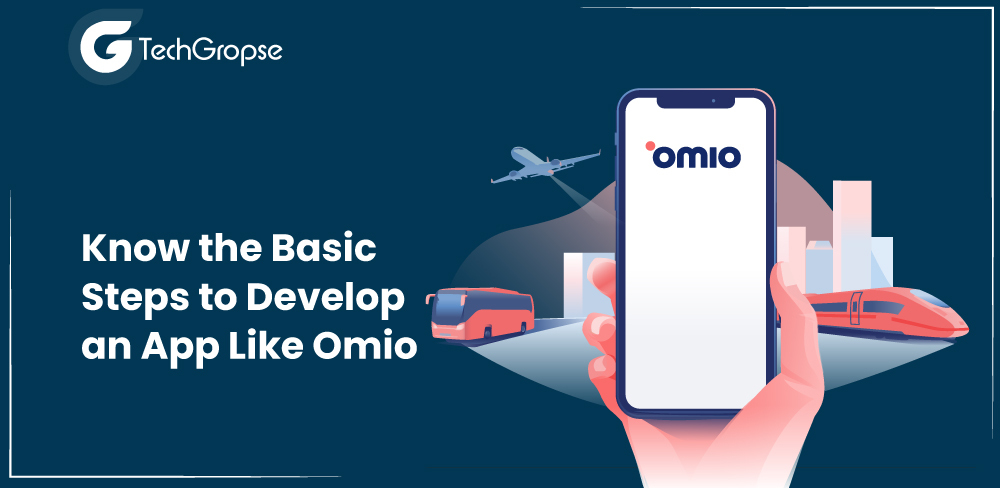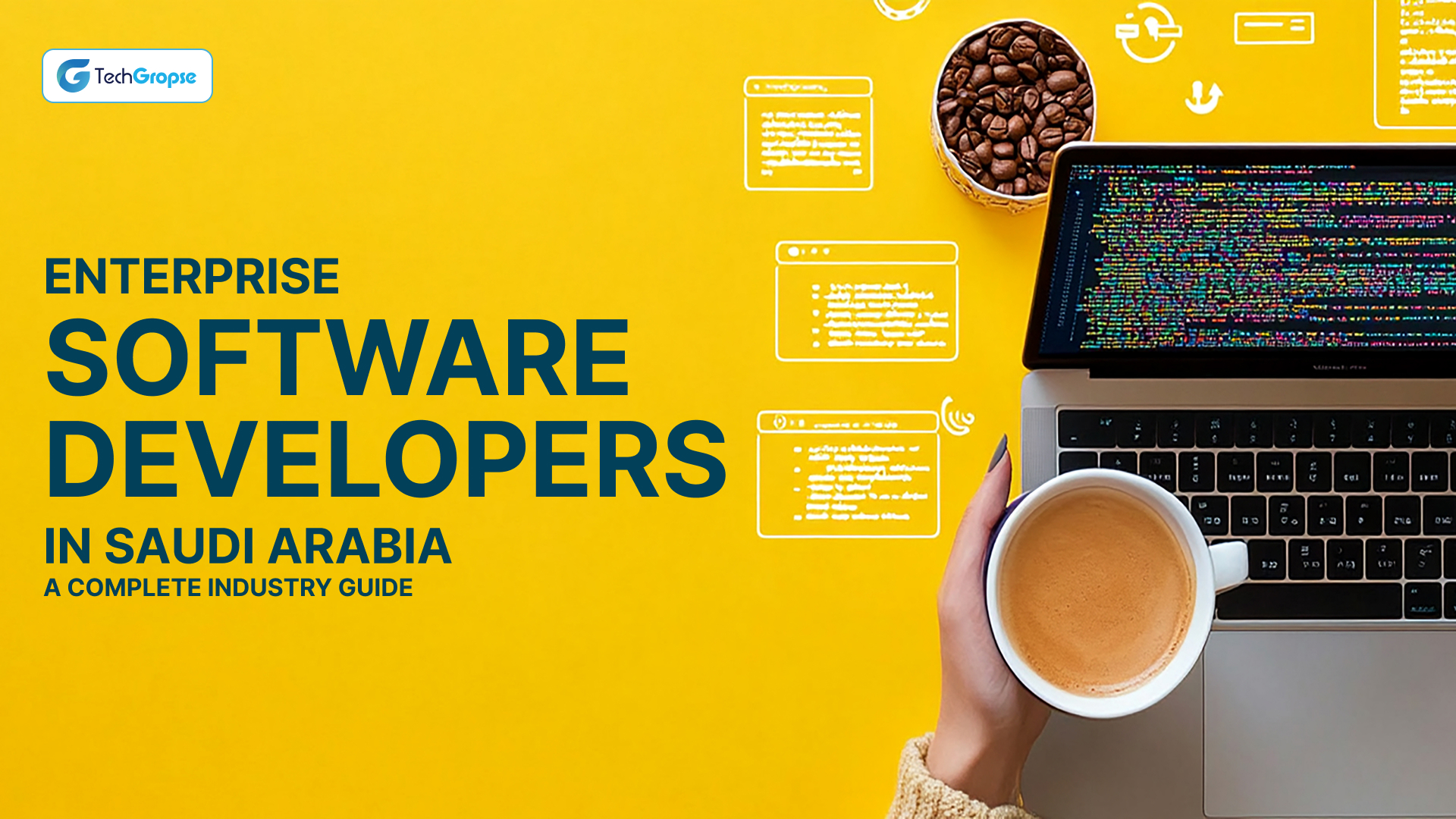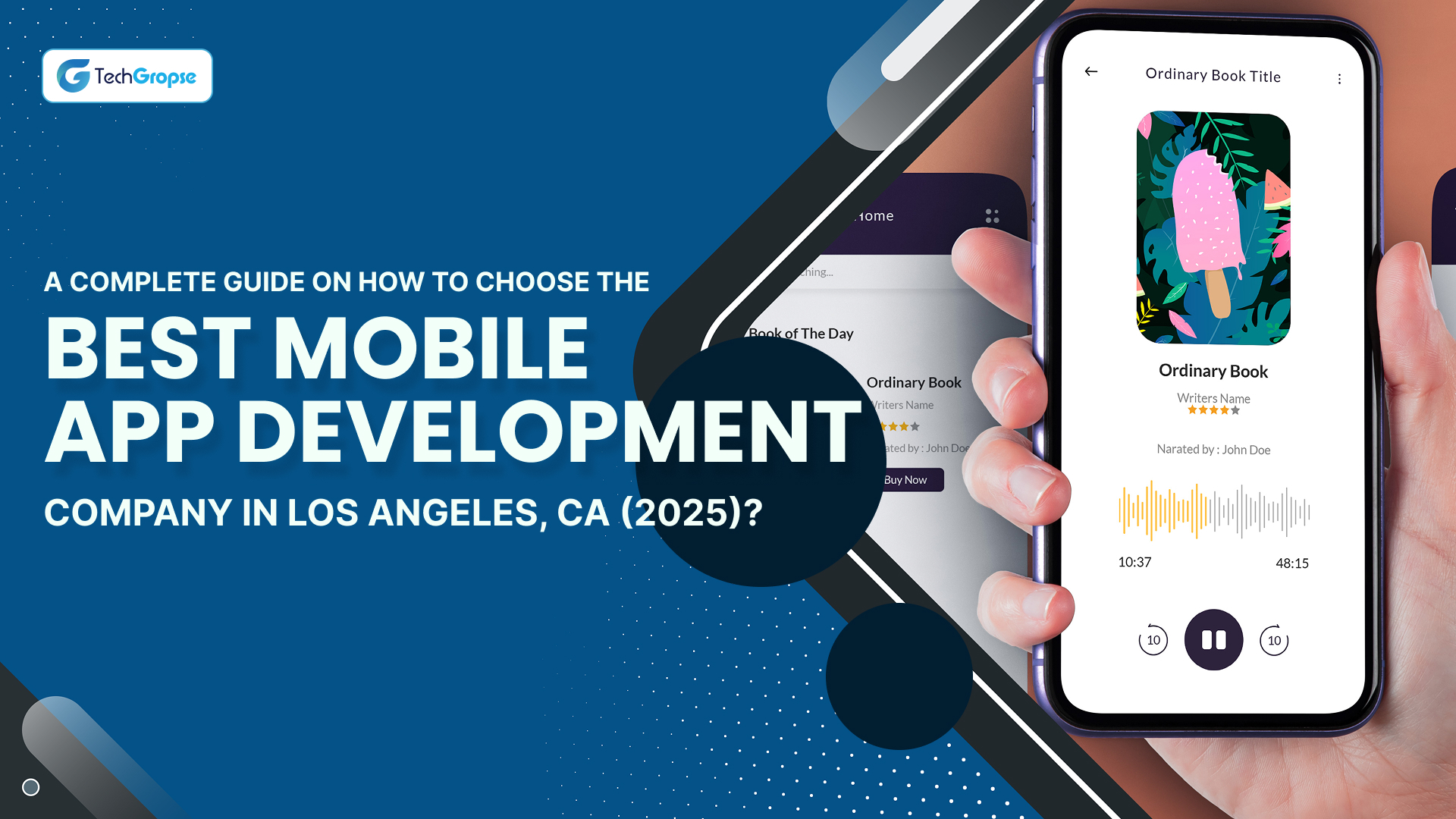Looking to develop an app like Omio from scratch? This blog will tell you where to start and how much it will cost – including examples of our travel apps!
Imagine, like, actually going to the ticket office to book your flight or using a paper map to find your hotel.
Crazy, right?
Nowadays, planning a trip without technology is like trying to solve a Rubik’s Cube blindfolded. We depend on our smartphones for everything. It is no surprise that in 2019, a whopping 61% of travelers booked their flights using smartphone apps. It is just so much easier.
Omio, a popular travel booking app, has gained immense popularity due to its seamless user experience and convenient features. Developing a successful app like Omio needs a clear understanding of the steps involved in the app development process.
Guess what?
The borders between countries are opening up again, which means people are starting to use travel apps on their smartphones more and more. So now is the best time to think about to build a tourism app. You can use it to book places to stay or give people cool travel experiences.
But wait,
- How do you even build a travel app?
- What makes a travel app really awesome?
- What features do you absolutely need to include?
- How much does it cost to develop travel app?
Let’s explore the basic steps to develop an app like Omio or build train booking app and set yourself on the path to train, bus, and flights ticket booking app development success.
Understanding the Concept of the Omio App
So, you are thinking to develop an app like Omio, huh? Well, first, let’s understand what Omio is.
Omio is a handy travel app that helps you book buses, trains, and flights all in one place. It is like having a personal travel agent right in your pocket.
Bus ticket app development company build the most famous travel planning apps that allow users to compare, search, and book different forms of transportation, including trains, buses, and flights, across Europe and other regions.
The app delivers a convenient platform for travelers to find the best routes, schedules, and prices for their desired destinations.
With Omio, users can fill in their arrival and departure locations, select their preferred dates and times, and view available transportation options. The app aggregates details from multiple travel providers, such as bus operators, major railway companies, and airlines, to present comprehensive and real-time results.
How Does Omio Application Work?
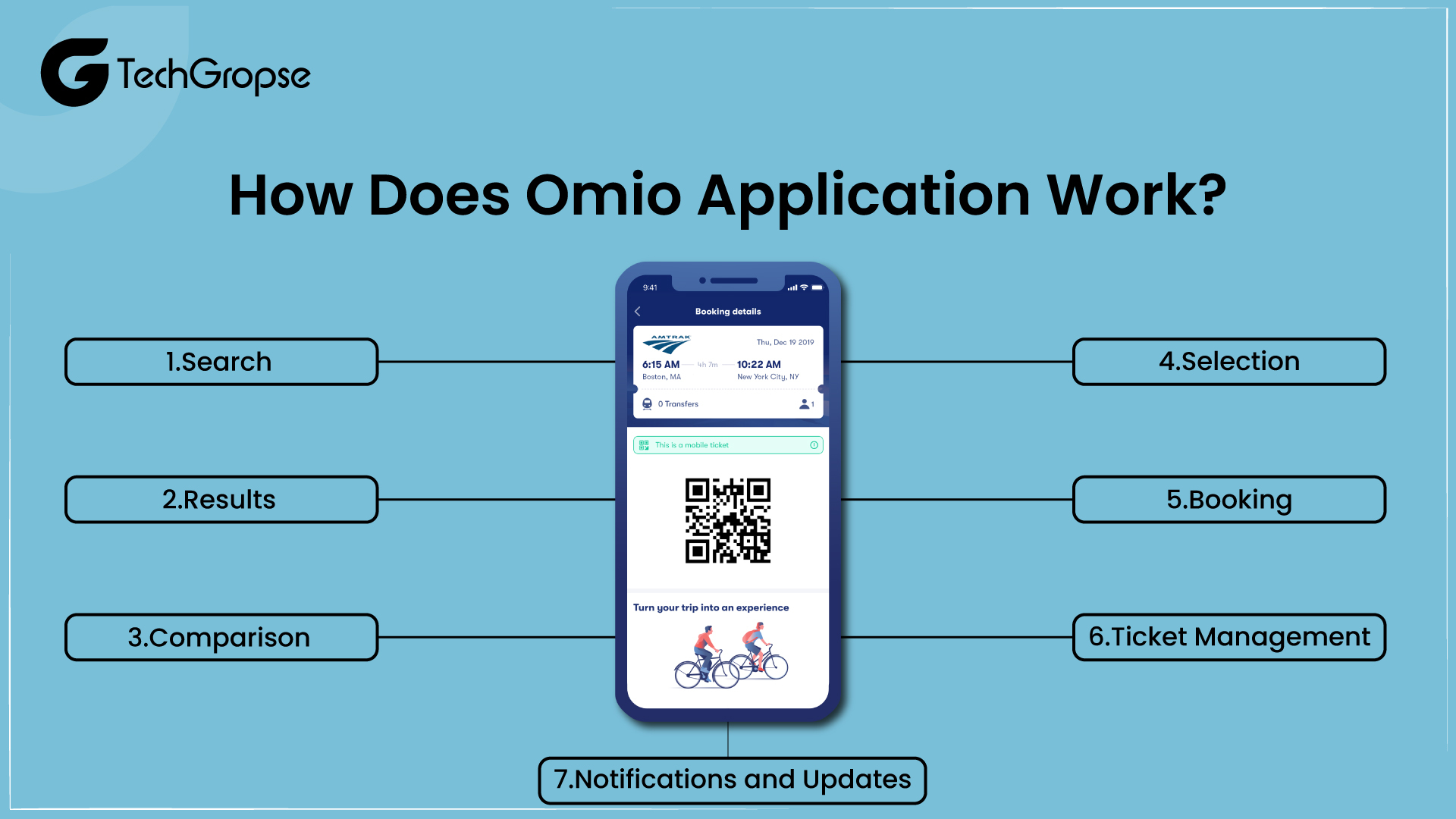
Curious about how Omio works its magic? It is actually pretty simple. The Omio app simplifies the process of planning and booking travel by aggregating details from different transportation providers and presenting them in a user-friendly interface.
It is like having a travel genie find the perfect journey for you!
Here’s a general overview of how the Omio app works:
1. Search
Users start by entering their desired departure and arrival locations, along with the dates and times of their intended travel. They can specify if they are looking for one-way or round-trip options.
2. Results
Omio’s algorithm then searches through its extensive database to find available travel options that match the search standards. These options can include trains, buses, flights, and sometimes even ferries or carpooling services, depending on the region.
3. Comparison
The app displays a list of available travel options, showing details such as departure and arrival times, travel durations, transfer information, and prices. Users can apply filters to refine their search results based on preferences like price, travel time, or specific transportation providers.
4. Selection
Once users have reviewed the available options, they can select their preferred choice. Tapping on a specific option provides more detailed information, including specific departure and arrival stations or terminals, and any transfer or connection details if applicable.
5. Booking
After selecting a preferred travel option, users can proceed to book their tickets directly within the Omio app. Depending on the transportation provider, users may have the option to choose seat preferences, add-ons, or any other available customizations.
6. Ticket Management
Omio provides users with digital tickets or booking confirmations, eliminating the need for physical tickets. Users can access their tickets directly within the app and present them to the transportation provider when required.
7. Notifications and Updates
The app keeps users informed about any changes or updates regarding their travel plans. This includes notifications about delays, cancellations, or any modifications to the selected routes or services.
Analyzing the Success of Flight Booking App Like Omio
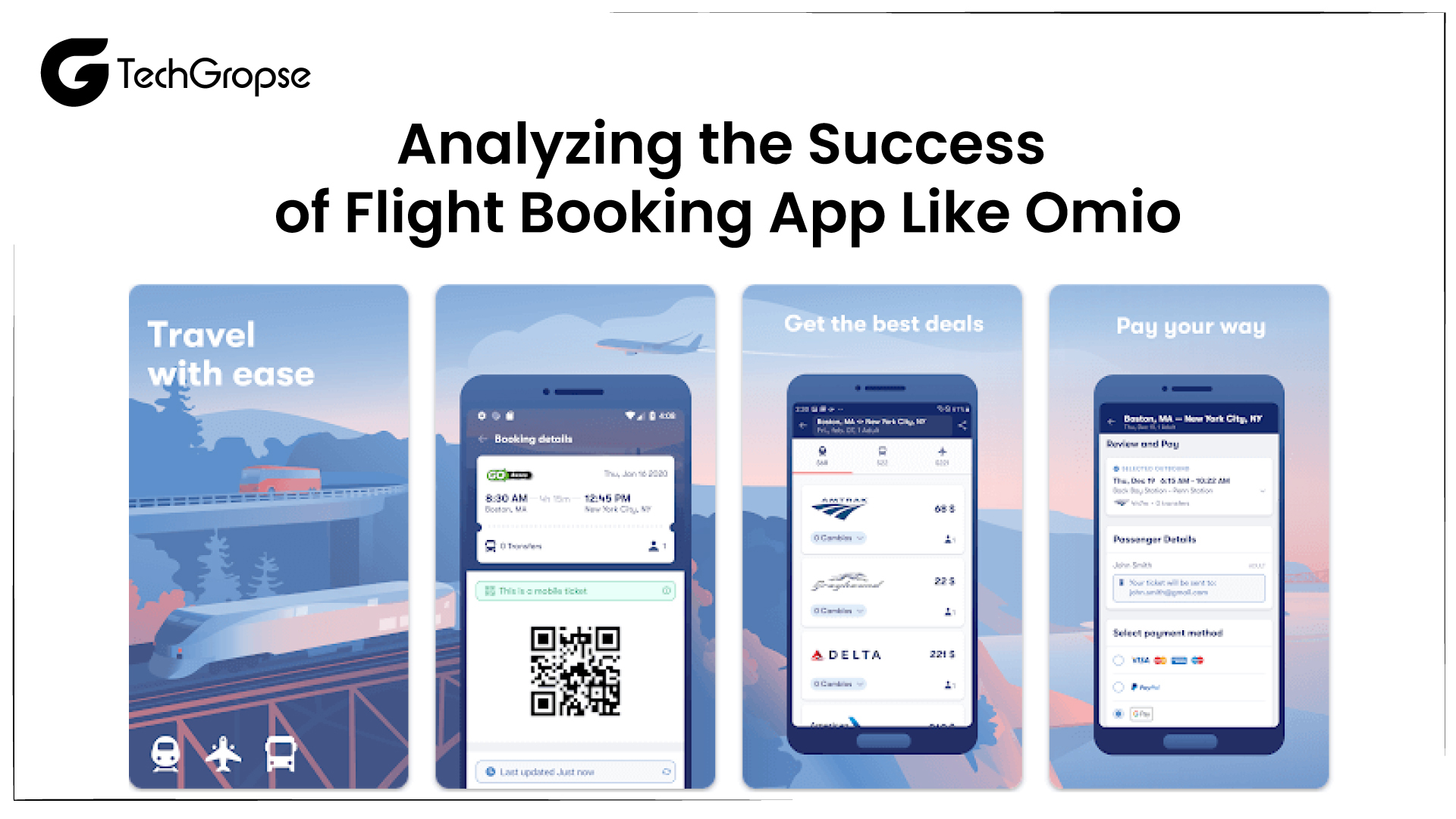
Omio has become quite the travel companion for millions of people around the world. And it is not hard to see why. It is no wonder Omio has become synonymous with stress-free travel.
With its extensive travel options, reflexive user interface, and seamless booking process, flights ticket booking app development has managed to simplify the travel planning experience.
some key indicators of Omio’s success up until that point:
- User Adoption: Omio has gained popularity among travelers, with millions of downloads and a large user base. The app’s availability on both iOS and Android platforms, along with support for numerous languages and currencies, has helped attract a diverse range of users.
- Market Presence: Omio has established a strong presence in the travel planning and booking market, particularly in Europe. The app covers a huge range of destinations and transportation options, like buses, trains, and flights, making it a comprehensive tool for travelers.
- Partnerships: Omio has formed partnerships and integrations with numerous transportation providers, including major railway companies, bus operators, and airlines. These partnerships have enabled Omio to offer an extensive range of travel options and ensure real-time availability and pricing information.
- Customer Satisfaction: User reviews and ratings play an essential role in assessing customer satisfaction. Omio has generally received positive feedback, with users praising its ease of use, comprehensive search results, and convenient booking process. However, individual experiences may vary, and it’s essential to consider the most recent user feedback.
- Industry Recognition: Omio has received recognition in the travel and technology industries. The app has been featured and reviewed by reputable publications, and it has received awards and accolades for its innovative approach to travel planning and booking.
- Expansion and Growth: Omio has expanded its services beyond Europe, gradually entering markets in other regions. This expansion demonstrates the company’s ambition to cater to a global audience and expand its user base.
What are the Steps to Develop an App Like Omio
If you want to build an app like Omio you should follow several essential steps. Here is a basic outline of the process to develop an app like Omio:
Step 1. Analysis Market Research
1.1 Conducting Market Research
Before you dive headfirst into app development, it is necessary to do your homework. Conduct thorough market research to understand the current travel app landscape. Look for gaps in the market, determine emerging trends, and collect insights on what users are looking for in a travel app.
1.2 Identifying Competitors
Remember, you are not alone in an expansive world of the best travel apps. There are competitors out there vying for users’ attention. Identify the essential players in the ticket booking app development market and analyze their strengths and weaknesses.
1.3 Understanding Target Audience and User Needs
To build an app like Omio that people actually want to use, you must understand your target audience and their requirement.
- Are you targeting budget-conscious backpackers or luxury travelers?
- What are their pain points when it comes to travel planning?
Conduct surveys or interviews, collect feedback from potential users, and develop user personas to guide your flights ticket booking app development process.
Step 2. Defining the App’s Features and Functionality
2.1 Essential Listing Features
Now that you understand your target audience better, it’s time to define the core features your app should have. Think about fantastic features like real-time price updates, booking options, search functionality, and integration with popular payment gateways.
2.2 Determining Additional Features
Now it’s time to brainstorm advanced features that can improve the user experience and set your app apart. These could include loyalty programs, social sharing, personalized recommendations, or even in-app travel guides. Get creative and think about ways to wow your users.
2.3 Prioritizing Features Based on User Requirements
To build train booking app it is tempting to include all the bells and whistles in your app, remember that simplicity is key. Prioritize features based on user needs and focus on delivering a seamless experience.
Step 3. Creating a User-friendly Interface and Wireframes
3.1 Designing an Intuitive User Interface
Well, nobody likes an app that looks like it was designed by a confused octopus. Design a user interface that is amazing, visually appealing, and easy to access. Consider using simple icons, clear labels, and logical information organization to guide users through the app effortlessly. Make it so user-friendly that even your grandma could use it.
3.2 Creating Wireframes and Mockups
Before you get too carried away with aesthetics, start by consulting a bus ticket app development company and mockups. These visual representations will help you map out the user flow, ensure functionality, and get feedback from stakeholders.
3.3 Iterating and Refining the User Interface
Design is not a one-and-done process. Once you have your wireframes and mockups, you should iterate and refine the user interface. Conduct usability tests, gather feedback, and make adjustments to create a seamless and delightful user experience.
However, on-demand app development company help to design a user-friendly interface which are the basic steps to embark on your journey of creating an app like Omio.
Step 4. Choosing the Right Technology Stack and Development Platform
You might find yourself asking questions like “Should I use Swift or Kotlin for native mobile app development?” or “Would a hybrid framework like React Native be a better fit?” You can hire dedicated developers to make the right decisions.
- Frontend Development: Select a proper framework or language for frontend development, such as:
- React Native (for cross-platform development)
- Kotlin (for Android development)
- Swift (for iOS development)
- Backend Development: Choose a technology stack for the backend that supports scalability and integration with third-party APIs, such as:
- js with Express.js or Nest.js
- Django (Python)
- Laravel (PHP)
- Ruby on Rails
- Database: Pick a database system that can handle large amounts of data efficiently, such as
- MySQL
- MongoDB (NoSQL)
- PostgreSQL
- APIs and Integrations: Use GraphQL or RESTful APIs to integrate with transportation providers and other services. Consider tools like Retrofit or Axios for API consumption.
- Mobile Platforms: Decide whether you want to make a native or cross-platform app using frameworks like
- React Native
- Flutter
- Web Platform: Determine if you want to build a web version of your app as well, using frontend frameworks like:
- js
- js
- Angular
- Cloud Services: Use cloud platforms to manage server infrastructure, host your app, and handle scaling, such as:
- Amazon Web Services (AWS)
- Microsoft Azure
- Google Cloud Platform (GCP)
- DevOps: Implement a DevOps strategy for continuous integration and deployment (CI/CD), using tools like:
- GitLab CI/CD
- CircleCI
- Jenkins
Step 4. Implementing Backend Functionality and API Integration
Once you have a clear understanding of the frontend development, it’s time to shift focus to the backend functionality. Mobile app development company involves developing the data architecture, which includes designing the database structure.
Here’s an example of implementing backend functionality and API integration to develop an app like Omio:
| Backend Functionality | Description |
| User Authentication | Implement user authentication and authorization to secure user accounts and access control. |
| User Management | Develop features for user registration, login, profile management, and password reset functionality. |
| Search and Filtering | Create endpoints to handle user search queries and apply filters based on travel dates, locations, and preferences. |
| Data Storage | Set up a database system to store user data, booking information, and other relevant data. |
| Third-party API Integration | Integrate with transportation providers’ APIs to retrieve real-time travel information, including schedules, prices, and availability. |
| Booking Reservations | Implement functionality for users to book and reserve tickets, handle payment processing, and generate booking confirmations. |
| Notifications | Set up a notification system to send alerts to users regarding booking status, delays, or cancellations. |
| Data Synchronization | Establish mechanisms to sync data with transportation providers’ APIs to ensure the app has up-to-date information on schedules and availability. |
| Payment Integration | Integrate a secure payment gateway to process transactions for ticket purchases. |
Step 5. Testing and Quality Assurance
Testing is an essential step in mobile app development to ensure a smooth user experience and identify any potential bugs or issues. Before moving into testing, it is important to plan a comprehensive test strategy.
| Testing and Quality Assurance Activities | Description |
| Test Planning and Strategy | Describe the overall testing approach, like test scope, test objectives, and test deliverables. |
| Test Case Design | Create detailed test cases covering different functionality, scenarios, and edge cases. |
| Functional Testing | Conduct tests to verify the app’s functionality against the specified needs. |
| User Interface Testing | Verify user interface elements like responsiveness, layout, and usability. |
| Performance Testing | Assess performance, scalability, and responsiveness under different load conditions. |
| Security Testing | Identify and address potential security vulnerabilities and ensure data protection measures. |
| Compatibility Testing | Validate the app’s compatibility with various devices, operating systems, and browsers. |
| Regression Testing | Re-test previously working functionality to ensure new changes haven’t introduced any issues. |
| User Acceptance Testing | Engage actual users to test the app in real-world scenarios and gather feedback for improvements. |
| Bug Tracking and Reporting | Document and track identified bugs or issues, providing clear steps to reproduce and fix them. |
| Performance Monitoring | Continuously monitor the app’s performance in production, identifying and addressing bottlenecks. |
Step 6. Launching and Marketing the App
Once your app has gone through the development, backend implementation, and testing phases, now you should prepare for the app launch.
Here are some key activities and strategies to consider, presented in bullet points:
1. App Store Optimization (ASO)
- Conduct keyword research and optimize the app’s title, description, and keywords to enhance visibility in app store search results.
- Design an eye-catching app icon and compelling screenshots to attract users.
2. Online Presence
- Make a dedicated website or landing page for the app, features, providing details, and a download link.
- Establish social media profiles and engage with the target audience through relevant updates, content, and promotions.
3. Influencer Marketing
- Collaborate with travel influencers, bloggers, or relevant industry experts to promote the app through reviews, sponsored content, or social media mentions.
4. Public Relations (PR)
- Draft press releases to announce the app launch and any major updates, targeting relevant media outlets in the travel and technology sectors.
- Reach out to journalists and bloggers to secure interviews, features, or reviews about the app.
5. App Launch Campaign
- Plan a targeted marketing campaign leading up to the app launch, including teaser campaigns, countdowns, and exclusive offers to generate buzz and anticipation.
- Leverage email marketing to reach out to potential users, offering early access, exclusive discounts, or incentives to download the app.
6. User Reviews and Ratings
- Encourage users to leave reviews and ratings on app stores by implementing in-app prompts or incentives.
- Monitor and respond to user feedback, addressing any concerns or issues promptly.
7. App Install Campaigns
- Utilize mobile advertising networks, such as Google Ads or Facebook Ads, to run targeted app install campaigns, reaching out to the app’s specific target audience.
8. Partnerships and Affiliations
- Explore collaborations with travel-related businesses, such as hotels, airlines, or travel agencies, to offer exclusive discounts, package deals, or cross-promotions.
Closing Words
Developing an app like Omio need careful planning, research, and implementation of different steps.
By understanding the concept, researching the market, defining features, making a user-friendly interface, selecting the right technology stack, implementing backend functionality, and conducting thorough testing you can create a successful app that rivals Omio’s success.
With dedication and attention to detail, you can develop an app that offers a seamless and enjoyable experience for users, just like Omio.
FAQ: Know the Basic Steps to Develop an App Like Omio
1. Is it necessary to develop an app like Omio from scratch?
While developing an app like Omio from scratch provides more flexibility and customization options, it can be time-consuming and resource-intensive. Alternatively, you can consider using a white-label solution or leveraging existing travel API integrations to accelerate the development process.
2. How can I ensure my app stands out in the competitive travel app market?
To make your app stand out, focus on offering unique features, a seamless user experience, and personalized services. Additionally, conducting thorough market research, understanding user needs, and continuously refining and updating your app based on feedback can help differentiate your app from competitors.
3. What factors should I consider when selecting the technology stack for my app?
When choosing the technology stack, consider factors such as scalability, security, compatibility, and developer expertise. Evaluate different frameworks and tools based on their suitability for your app’s needs, performance, and ease of maintenance.






